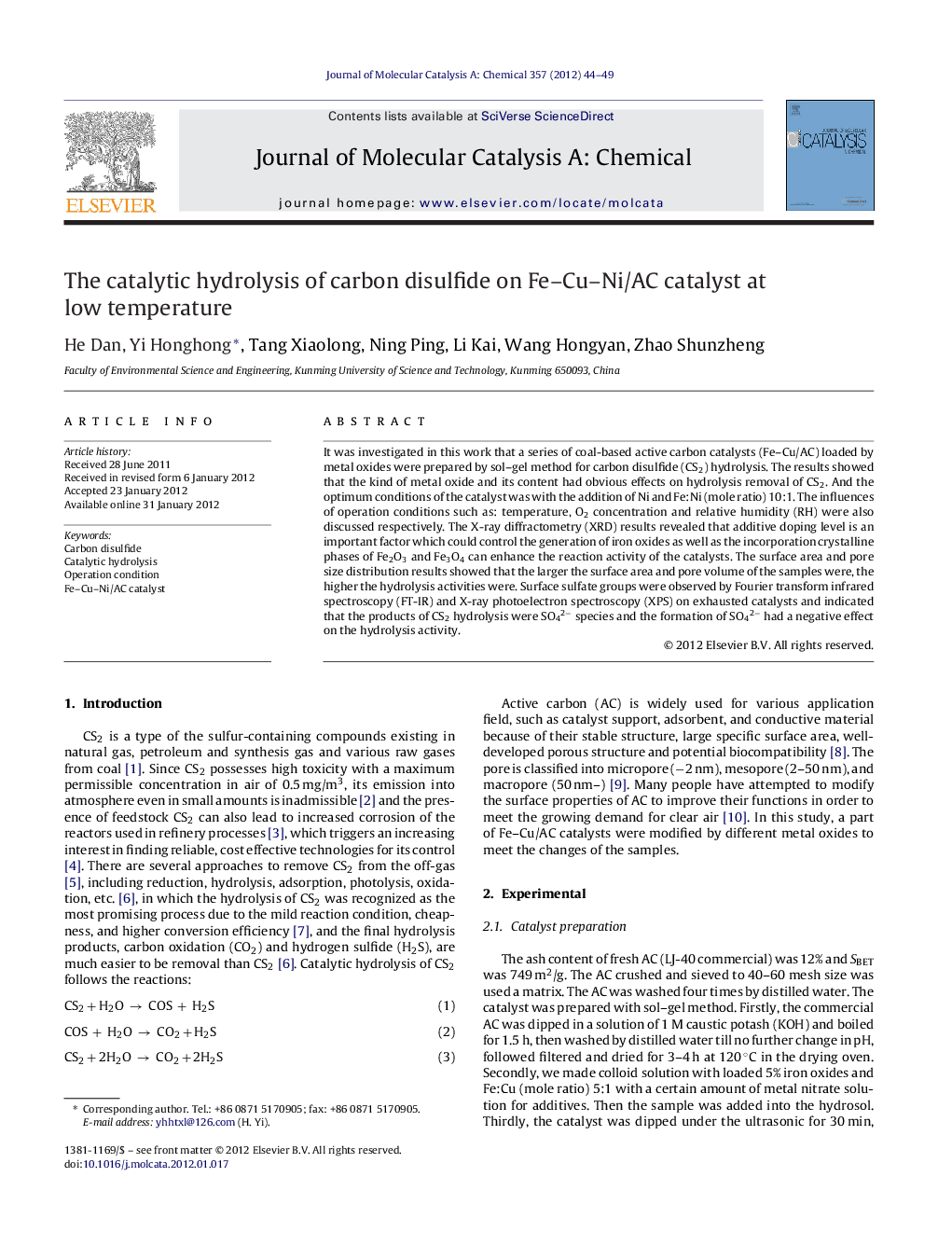| Article ID | Journal | Published Year | Pages | File Type |
|---|---|---|---|---|
| 66122 | Journal of Molecular Catalysis A: Chemical | 2012 | 6 Pages |
It was investigated in this work that a series of coal-based active carbon catalysts (Fe–Cu/AC) loaded by metal oxides were prepared by sol–gel method for carbon disulfide (CS2) hydrolysis. The results showed that the kind of metal oxide and its content had obvious effects on hydrolysis removal of CS2. And the optimum conditions of the catalyst was with the addition of Ni and Fe:Ni (mole ratio) 10:1. The influences of operation conditions such as: temperature, O2 concentration and relative humidity (RH) were also discussed respectively. The X-ray diffractometry (XRD) results revealed that additive doping level is an important factor which could control the generation of iron oxides as well as the incorporation crystalline phases of Fe2O3 and Fe3O4 can enhance the reaction activity of the catalysts. The surface area and pore size distribution results showed that the larger the surface area and pore volume of the samples were, the higher the hydrolysis activities were. Surface sulfate groups were observed by Fourier transform infrared spectroscopy (FT-IR) and X-ray photoelectron spectroscopy (XPS) on exhausted catalysts and indicated that the products of CS2 hydrolysis were SO42− species and the formation of SO42− had a negative effect on the hydrolysis activity.
Graphical abstractHydrolysis of carbon disulfide over Fe–Cu/AC catalyst with different additive was investigated and Ni showed the best catalytic activity.Figure optionsDownload full-size imageDownload high-quality image (87 K)Download as PowerPoint slideHighlights► This paper focus on catalytic hydrolysis of carbon disulfide at the low temperature (below 70 °C). ► We interpret the experimental results through the characterization data. ► Fe–Cu–Ni/AC was studied as catalyst for hydrolysis of carbon disulfide.
